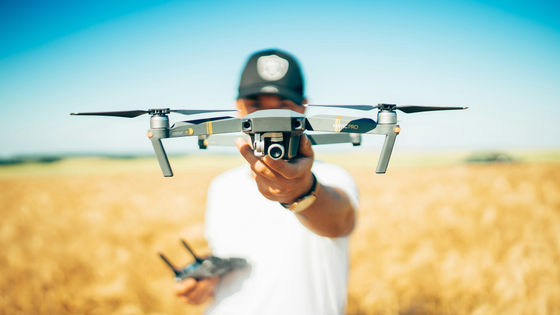A report summarizing what Western countries' armies should learn from Ukraine's resistance to Russian aggression is being released

Russia's invasion of Ukraine, which began in February 2022, overturned the initial view of Russia's superiority, and even after more than a year had passed since the article was written, the Russian army has only occupied a part of eastern Ukraine. It has become a form in which intense resistance worked. A report by
How to beat Russia: What armed forces in NATO should learn from Ukraine's homeland defense | GLOBSEC - A Global Think Tank: Ideas Shaping the World
https://www.globsec.org/what-we-do/publications/how-beat-russia-what-armed-forces-nato-should-learn-ukraines-homeland
How to beat Russia by Nico Lange v7 web.pdf
(PDF file) https://www.globsec.org/sites/default/files/2023-02/How%20to%20beat%20Russia%20by%20Nico%20Lange%20v7%20web.pdf
'Russia continues its war of aggression against Ukraine, but its forces have already been defeated. In the face of Ukrainian resistance and the support of its allies, Russia has barely achieved its military goals. Clearly. Ukraine will win in 2018,' he said, pointing out that Ukraine has demonstrated extraordinary skill and creativity in homeland defense. Based on open source intelligence and interviews with Ukrainian commanders and soldiers who have been involved in actual combat, we have summarized the following 10 recommendations for NATO.
◆ 1: Engage in all-out war with society as a whole
• provide basic military and medical training for large segments of society;
・Make a strategy for a military reserve force that makes use of citizen qualifications.
• Conduct regular simulations and exercises at the regional and local levels.
• Build a community for homeland defense.
• Develop mayors, governors and decision makers by making crisis management and defense training a prerequisite for office.
・Build an infrastructure to collect and use data provided by civil society.

◆ 2: Perform the latest battle based on data
• Implement a complete and continuous data connectivity system on the battlefield.
• Collect data across all levels of command and innovate data analysis.
• Build
• Establish an embedded “information army”.
• Improves speed of operations against time-sensitive targets.
- Radically accelerate the cycle of innovation and procurement.
・Open the door to innovation by the private sector and facilitate access for new companies and startups.

◆ 3: Build a distributed network that gives many command responsibilities to the lower and middle layers
・Increase mobile staff and agile and adaptable forces.
Avoid highly detailed military plans and overly rigid chains of command.
・Leave it to verbal agreements and decision-making depending on the situation.
・Promote thinking and acting in a network or matrix structure, and break away from rigid structures.
- Strengthen delegation of responsibilities to non-professionals.
• Investigate whether a radically different chain of command requires different mechanisms to be successful.

◆ 4: Prepare the battle situation with a consistent focus on unit logistics, command, and control
• Improve military mobility.
• Greater emphasis on light-to-moderate forces.
・Explore ways to defeat opponents that outperform quality and quantity by enhancing speed.
・Avoid direct engagement with the other party and carry out 'Shaping Strategy' training to launch attacks on supplies and transportation networks.

◆ 5: Prepare for mass operation of drones
・Introduce drones to the entire army.
・Use not only specially developed military drones but also inexpensive commercial drones for military purposes.
Rapid development of new, simple, and cost-effective drones.
・Reduce dependence on commercial drones made in China.
・Educate the entire military on the military piloting capabilities of drones.
・Procurement of cost-effective drones.

◆ 6: Create a system to operate a small unit and win a local battle
• Reintroduce light infantry battalions and companies capable of asymmetric, highly mobile combat.
• Retrain infantry units in commando operations and urban warfare tactics.
・Increase equipment, inventory, and production capacity for mobile anti-tank, anti-aircraft, and anti-drone weapons.
・In terms of transportation, we will strengthen granular transportation and pre-deployment of goods, and utilize standard containers and drones.
• Establish a high-intensity training and exercise system for infantry.

◆ 7: Reconsider artillery operation in defensive warfare
- Significantly increase and redeploy wheeled, tracked, towed, and self-propelled artillery units.
・Increase the production capacity of artillery shells and ammunition.
• Investigate various Russian military firearms and ammunition collected in Ukraine.
・Incorporate AI-based software into the cannon.
Use drones for target acquisition and fire control.
・Improve anti-artillery fire capability.
・Equipment and training aimed at high-speed
・Improve ammunition flow by building more ammo racks.

◆ 8: Support combat units from behind with stable logistics utilizing private transportation systems such as railways
・Provide redundancy and crisis management capabilities in private transportation.
• Use the government's contingency fund to facilitate repair capacity building, staff training, spare parts stockpiling, etc. of the civilian transportation system.
• Provide a legal framework and funding for the extensive use of civil infrastructure in defense logistics.
- Intensive training on nighttime logistics operations in line with real-world conditions.

◆ 9: Focus on advanced operational security, strict confidentiality, and skillful camouflage
・Conduct regular and intensive exercises in a realistic security environment.
・Finely grasp the latest information on the sensor performance held by the enemy.
・Collect language, geography, and cultural knowledge of enemy forces.
• Rethink bureaucratic procedures in the force and foster a culture of mass participation in terms of rigorous operational security.
• Address the balance between heavy defense and civil and parliamentary oversight.

◆ 10: Dominance in information warfare
- Fundamentally transform the structure and content production of strategic communications in NATO militaries.
・Establish media production and communication skills.
・Disseminate high-quality information through various channels.
・Realize quick decision-making and highly flexible communication.
・Professional creators as partners
• Structural support for strategic communications at the highest levels of politics.

Related Posts:
in Note, Posted by log1h_ik







